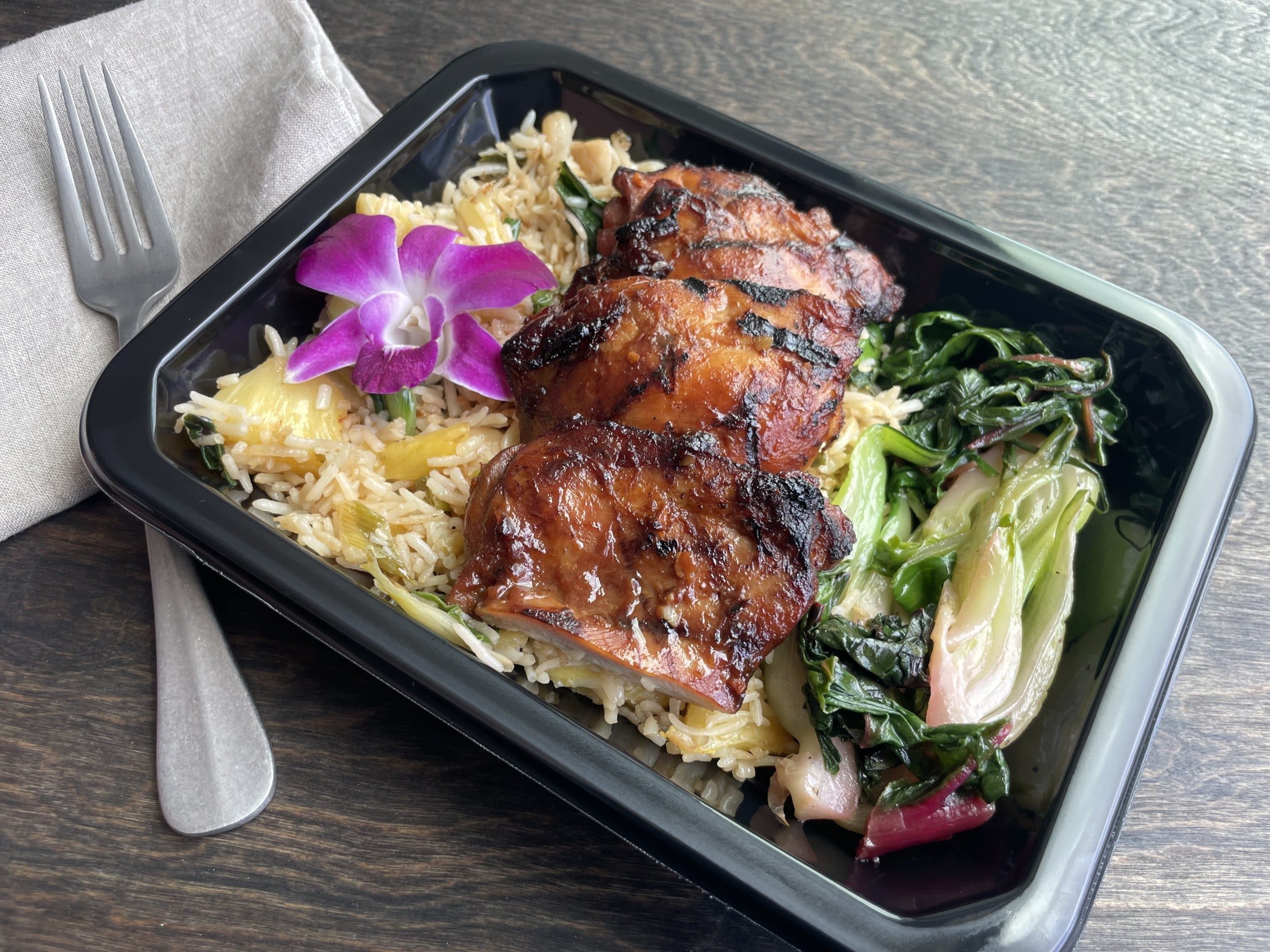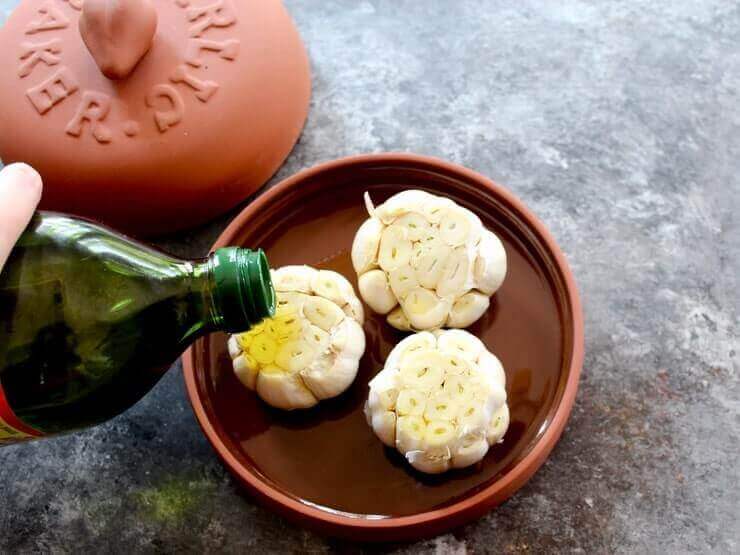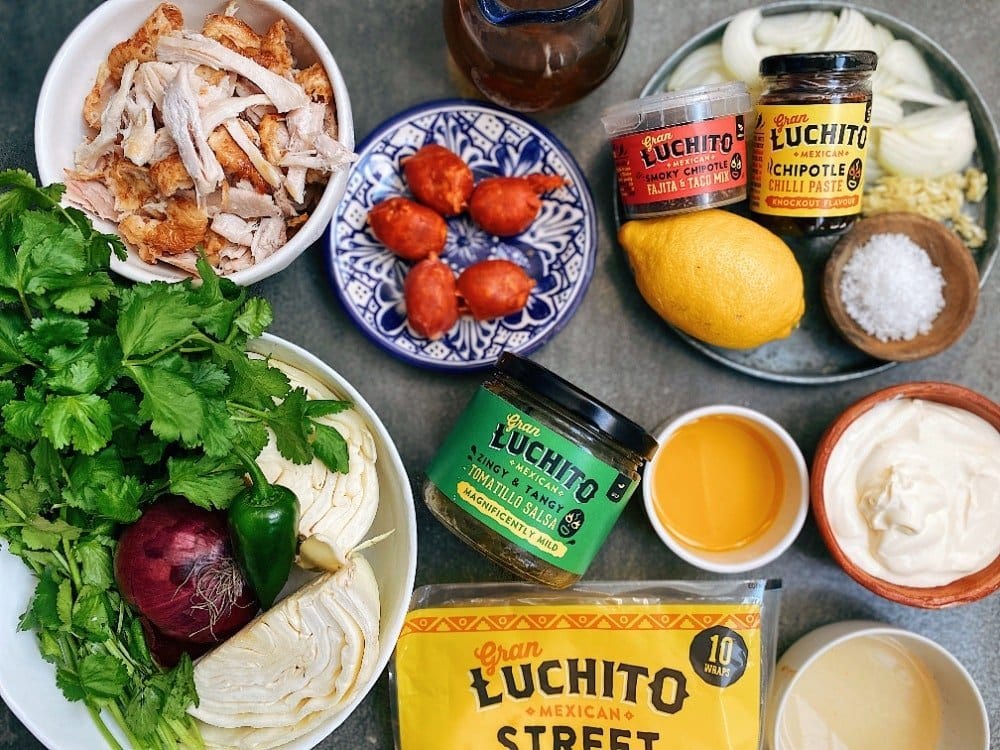
Take your tastebuds on a Hawaiian Vacation
Summer just got here, and this heat already has us dreaming of a sweet island getaway. That’s why this month we turned to the beautiful
Cart
No products in the cart.
NEW YEAR SALE ENDS IN
Spend $130, Save $15. Spend $170, Save $20. Spend $200, Save $30.

By the end of this blog I can almost guarantee that you will learn at least one thing about the benefits of garlic that you didn’t know before you started as well as the answer to this trivia question: Garlic is a vegetable otherwise known by what name? To find out the answer you’re going to have to read on and search for it…
Healthy Gourmet’s menu is inspired by world cuisine. We use garlic frequently in both fresh and powdered form to replicate authentic recipes from around the world. Whether your taste buds are attuned to Asian, African, European or American homestyle food, we’ve got you covered. You may be pleased to know that the garlic you’re eating is bringing more to the table than just flavor.
Garlic been found in the pyramids of Egypt and is referenced in the Bible. Hippocrates, the father of Western medicine, prescribed it regularly, and it was given to early Olympic athletes to enhance performance. It is famed in folklore for its ability to ward off evil, whether in the form of vampires, demons, or werewolves. And above all else it is a delicious and nutritious food has the added bonus of being low in calories.

Since written records have existed, the benefits of garlic have been documented because of the various ways in which it was used medicinally. In Traditional Chinese Medicine (~2000 BC), garlic was used as a treatment for respiratory and digestive issues, particularly diarrhea and parasite infections. Five hundred years later, the Egyptians recorded their use of garlic for circulation issues, parasite infections, and “abnormal growths,” which were possibly abscesses. Additionally, garlic-like bulbs were used in teas to treat flu-like symptoms by indigenous North Americans.
Notably, these ancient practices were in place long before the birth of the modern university and the associated Western medicine standards. These independent discoveries of garlic-based treatments are prime examples of robust scientific research that were reproduced by multiple cultures across the globe. The scientific literature today, however, adds important resolution to the discovery made by anonymous scientists, millennia ago. For instance, how does garlic work as an antimicrobial?
Modern research confirms what ancient healers and herbalists intuitively knew: that one of the benefits of garlic is that it is a potent weapon in the battle against disease. A 1999 study by S. Ankri and D. Mirelman shows that a compound within garlic called Allicin is responsible for garlic’s antimicrobial, antiviral, and antiparasitic activity. Allicin has also been shown to combat drug-resistant strains of E. coli and could potentially battle some superbugs that are resistant to antibiotics.
Here’s where it gets interesting: Allicin isn’t actually in garlic. A compound, alliin, and an enzyme, alliinase are part of the cells in a garlic clove. These two are kept separate, however, like star-crossed lovers. When a knife ruptures the cell walls, they meet and form the all-powerful and mighty allicin. The allicin then gives rise to various organosulfur compounds which make garlic so healthy. Allicin is also one of the reasons why garlic gives off its unmistakable aroma only after crushing, chopping or slicing.
This detail about Allicin may sound like something that you don’t need to know. However, the way that you prepare your garlic before eating it is key to reaping its benefits. A 2001 study by K. Song and J.A. Milner showed that heating, microwaving, or boiling crushed garlic destroys all the alliinase enzyme activity within it, neutralizing the health-giving benefits of allicin. What does this mean? It means you need to leave your chopped garlic for ten minutes before cooking it, to let the alliinase do its work and form as much allicin as possible before it’s neutralized by heat.
Take your time when cooking your “Stinking Rose”! By the time you’re done getting the rest of your ingredients ready, those crushed cloves will have a lot of allicin moving around in their cells, which will enable you to fight another day. Oh, and you guessed it – the alternative name for garlic is Stinking Rose – so-called because of its bud-like appearance and strong smell. Incidentally there are two restaurants in California (Beverly Hills and San Francisco) named after the Stinking Rose, and they use garlic in every recipe served!

Who knew there were so many different kinds of garlic? While most recipes don’t say specifically what kind of garlic to use, once you know the basic varieties, you can start to play around and experiment with the flavors and nuances each different type brings to the table
Hardneck garlic tends to have more flavor than their soft-necked cousins. They’re characterized by hard woody central stalks and a long flower stalk (scape) that loops and curls, usually twice. They tend to have four to twelve cloves in each bulb and have a rosy hue to the flesh of the coves and thinner skins.
Hardneck garlic can sometimes verge on being spicy or hot and grows best in areas with very long, cold winters, since they require a longer time of vernalization (i.e., they need a long, cold winter to be dormant so they can flower in the spring). Great for roasts, gamey meats and vinaigrettes.
Softneck garlic is a good all-purpose garlic that works in almost any dish and comprises most of the garlic you see in major supermarkets. Because it lacks the flowering scape of hardneck garlic, it produces many more cloves—sometimes as few as eight, and sometimes getting as high as thirty or more.
If you want to eat or use garlic raw or lightly cooked, you’ll probably head for a softneck variety. If you’re making a simple salad dressing where garlic is a featured flavor, opt for softneck garlic. It has a more grassy, plant-like taste and doesn’t have the bite of its hardneck siblings. Most processed garlic foods, like garlic powder and seasoning, come from softneck garlic.

Originally thought to be a variety of softneck garlic, Creole garlic turns out to be in a class by itself—literally. These garlic bulbs tend to have up to 12 cloves and range from a beautiful light pink to an almost purple glow. Unlike the rosy varieties of hardneck garlics, the entire bulb itself tends to be pink/red/purple.
Creole garlic is rare and grows better in warmer climates. This type of garlic tends to have some heat to its flavor and the pungency varies depending on the variety you buy.
The origins of black garlic are uncertain – some say it dates back to Ancient Egypt. What is known is there’s lots of black garlic in Korean grocery stores and that its taste is almost uncategorizable. A combination of fermentation, dehydration, and low heat applied for up to a month is used to get the sugars in the garlic to caramelize over a long period of time and turn black.
It’s recognizably garlic at first bite, but it has rich, plummy undertones as well as a hint of vinegar. It’s a little chewy, like good dried fruit, and it works well when cooking for people who hate regular garlic. It also works well in sauces and vinaigrettes, but it’s too expensive to use in anything large-scale, like a marinade. Some people use it in exotic chocolate desserts.
Garlic scapes and ramps often get confused for one another, but they are two distinct varieties of greens. As mentioned above, the scape is the flowering stalk that grows in the middle of hardneck garlic bulbs. It twists and loops and often has a tear-drop shaped white bulb near its end. It’s usually removed so that the plant won’t produce more seeds and will instead grow a bigger garlic bulb.
Scapes are magically delicious, especially when sautéed in butter, oil, and seasoned with a little fleur de sel. The flavor is fresh, green, and vegetal and suffused with the taste of young, fresh garlic. The texture is tender yet crisp. They’re great as a side dish, steamed until tender and served in salads, or used as an accompaniment for pasta. Their flavor is delicate.
Ramps tend to have a couple of wide, spade-shaped leaves and grow from 4 to 12 inches long with tender, pale-green stems. Their flavor is like a cross between young garlic and spring onions: pungent yet sweet. Early spring is their best season. Like scapes, they work in just about anything, whether they’re lightly sautéed and served alongside a main dish or used to create an extravagantly tasty pasta.
Those giant bulbs that look like garlic on steroids are actually part of the leek family. Elephant garlic is milder than most garlic, but has an onion-y edge to its taste.
Elephant garlic is often interchangeable with softneck garlic in terms of taste and works as well as softnecks in sauces, vinaigrettes, and stir-fries. It’s also great when roasted, especially if you have a lot of people coming over, since it’s so enormous and easy to peel!

The art of roasting garlic is described and photographed perfectly by Tori Avey in her Five Simple Methods for Oven Roasting Garlic Without Foil:
Most people are familiar with garlic as a flavor enhancer especially in Mediterranean, Asian and Middle Eastern cuisine. But why would you want to roast garlic by itself? Surely an entire bulb of garlic would be obnoxious in strength? Actually this is not true. Roasting garlic adds depth, makes it tender and gives it a mild smoky sweetness that not only tastes delicious but is easier for some to digest than raw or lighter cooked garlic.

Spread the soft smoky cloves straight onto bread as a condiment. For example pair it with goat cheese on toasted french bread or with a simple sprinkle of salt and pepper. Substitute roasted for raw garlic in many recipes to give a milder, more delicate flavor– like in hummus, baba ghanoush, or falafel.
The key to oven roasting is to steam the garlic while it is roasting, so the cloves don’t dry out. Prepare the whole head of garlic prior to roasting. If you only have garlic cloves and not the whole head, use the stovetop roasting method.
If you’re replanting garlic from your own stock, choose the biggest and best heads from the summer’s harvest. If purchasing, look for garlic sold specifically for planting. Garlic from the produce section at the supermarket may have been treated with a sprout inhibitor to prevent it from growing. Hardneck, Softneck and Elephant garlic are the most common varieties you will find for planting; their characteristics explained earlier.
Garlic bulbs are ready to harvest in late spring or summer, from seven to eight months after planting. The outward signs are the green leaves, which will begin to turn brown, and the flower stems – if present – which will begin to soften, although staying green.
“Let food be thy medicine, and medicine be thy food.” Those are famous words from the ancient Greek physician Hippocrates, often called the father of Western medicine. He actually used to prescribe garlic to treat a variety of medical conditions. Modern science has recently confirmed many of these beneficial health effects. Here are 11 health benefits of garlic that research supports:
As described above, garlic is a plant in the onion family that’s grown for its distinctive taste and health benefits. It contains sulfur compounds, which we believe bring some of the health benefits.
Garlic is low in calories and rich in vitamin C, vitamin B6 and manganese. It also contains trace amounts of various other nutrients.
Garlic supplements help prevent and reduce the severity of common illnesses like the flu and common cold.
High doses of garlic appear to improve blood pressure for those with known high blood pressure (hypertension). In some instances, supplements may be as effective as regular medications.
Garlic supplements seem to reduce total and LDL cholesterol, particularly in those who have high cholesterol. HDL cholesterol and triglycerides do not seem to be affected.
Garlic contains antioxidants that protect against cell damage and aging. It may reduce the risk of Alzheimer’s disease and dementia.
Garlic contains antioxidants that protect against cell damage and aging. It may reduce the risk of Alzheimer’s disease and dementia.
Garlic may improve physical performance in lab animals and people with heart disease. Benefits in healthy people are not yet conclusive.
According to one study, garlic significantly reduces lead toxicity and related symptoms.
Garlic appears to have some benefits for bone health by increasing estrogen levels in females, but more human studies will confirm findings.
Garlic is delicious and easy to add to your diet. You can use it in savory dishes, soups, sauces, dressings and more.
Susan Phillips describes a handful of surprising benefits of garlic in her California Mom blog: She says most people today rely on garlic to enhance their culinary experiences but are unaware of its potent healing properties. Throughout history, medics have been exploiting the benefits of garlic for a myriad of health problems. In fact, some cultures never used garlic in cooking, but only for its healing attributes.
Using garlic to soothe an aching tooth is very successful according to several testimonials at Grow Youthful. Use either a whole clove directly on the sore tooth or extract the garlic oil via a mortar and pestle, both methods have proved magically effective.
A natural anti-fungal, add garlic to your next foot bath to relieve itchy feet. If you are concerned about the strong garlic odor on your tootsies, boiling the cloves whole will reduce the aroma. Get the solution HERE
A concoction of honey and garlic boosts your immunity and soothes sore, itchy throats naturally. The honey cuts through the zestiness of the cloves and makes eating the raw cloves pleasant. Get the recipe HERE
As unconventional as it might seem, using garlic to reduce pore size is a brilliant remedy for those annoying little facial imperfections. It can also help with reducing the length of time that you have a breakout. Get the solution HERE
The sharp aroma of garlic is a natural repellent for mosquitoes and other pesky insects around the house. Fill a few small dishes with minced garlic on your outdoors tables and enjoy a pest-free outdoor summer dinner. Get the solution HERE
Virgil said that eating garlic maintains strength and vigor.
Pliny said Garlic is effective as a treatment for consumption.
Eleanor Roosevelt said she ate three garlic balls a day (dipped in chocolate) to keep her memory sharp.
Celsius said it cured fevers.
Hippocrates said it made an excellent laxative.
Mohammad recommended it as an antidote for viper bites and scorpion stings, but he forbade anyone smelling of garlic to enter a mosque on the sabbath.
Queen Elizabeth II allegedly despises garlic and has banned it from the kitchen at Buckingham Palace for decades because of the odor it leaves on the breath.
How do you like your garlic? Try one of our garlicky recipes here!

Sources
https://californiagrown.org/blog/5-surprising-uses-for-garlic/
https://www.healthline.com/nutrition/11-proven-health-benefits-of-garlic#section4
https://toriavey.com/how-to/how-to-roast-garlic/
https://www.gardeners.com/how-to/garlic/7168.html
https://americanfolklore.net/folklore/2010/10/garlic_superstitions_folklore.html
http://bobschwabach.com/garlic-some-tales-to-take-your-breath-away
https://www.asm.org/Articles/2019/July/Old-Wives-Tales-and-Garlic-as-an-Antibiotic-Are-Mi

Summer just got here, and this heat already has us dreaming of a sweet island getaway. That’s why this month we turned to the beautiful

Check out how EatFlavorly utilizes Mexican meats and so many more in our scratch-made meals over at Our Menu! With Cinco de Mayo

National Earth day is approaching on Thursday April 22nd. Today, not only is Earth Day a day meant to increase awareness of environmental problems, but
The convenience of home meal delivery is undeniable. Getting food delivered to your door that does not require cooking or cleaning is a huge time-saver.